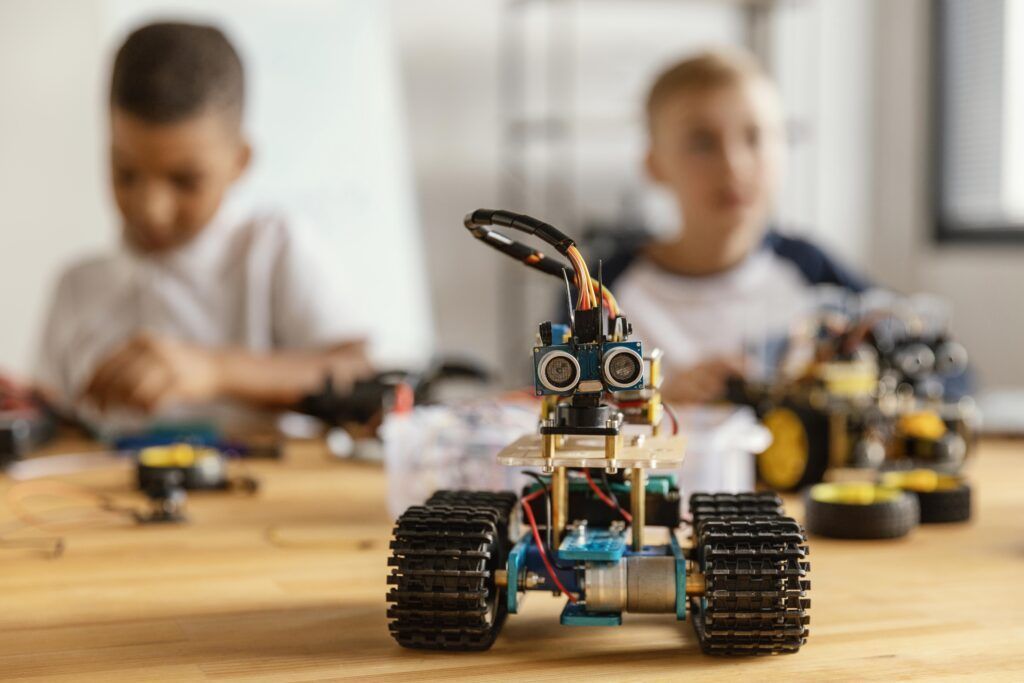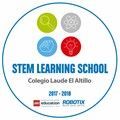The application of robotics in children’s classrooms
Robotics in the infants classroom is an activity that allows our students to begin to familiarize themselves with applied sciences. At El Altillo International School we have an area of robotics and coding that begins in the first years of kindergarten, and is developed throughout this educational stage.
Educational robotics in the infants classroom has advantages that not only focus on the technical knowledge of this activity, but also allows students, from three to five years old, to develop their skills in other areas during the infants stage.
Benefits of robotics in the infant classroom
- Robotics allows them to prepare for their future. Becoming familiar with the advances in science will allow them to maintain an open attitude towards change and face their future from a positive perspective.
- Logic and the ability to think abstractly are two of the advantages of robotics-related activities from an early age.
- Collaboration and teamwork are two of the values also offered by this type of activities. Problems are solved in a collaborative way, by means of consensual group conclusions.
- Their creativity has no limits. Robotics projects, even the most basic ones, do not have a single solution; they allow the student to adopt creative thoughts and particular solutions.
- Fine motor skills can be developed through interaction with robots. This type of movement requires precision and concentration, and robotics encourages this type of motor skills.
- Critical thinking is also developed through robotics-related activities. Making decisions based on the consequences they may have is part of the development of a scientific project.
- Robotics allows the knowledge learned to be manifested in an evident way. It is an activity in which they can prove that technical learning has its practical side.
- It is an activity with which they can expand their vocabulary, both in English and Spanish, related to the scientific and technical environment.
Programming and mathematical basis of robotics
Programming will be a basic language in the near future. Learning programming will be a common skill and therefore, we must prepare our students to assimilate this language from their first years of schooling.
Knowing the basics of programming and understanding how they are applied in real life is a process that can start from kindergarten, a robotics project in the classroom is the most appropriate way to have a first contact with programming, discovering its applications.
Robotics bases much of its effectiveness on complex mathematical operations, which start from simple operations. The kindergarten courses are essential to establish certain knowledge, the mathematical foundations are learned at this age, and therefore this stage is crucial for the development of mathematical skills. Robotics is a reinforcement for learning simple operations and for students, it is an enjoyable activity, very different from other subjects based on memorization.
Objectives and methodology
The robotics classroom at our school is equipped to host activities throughout different educational stages. In the case of our kindergarten students, they have access to robotic mechanisms adapted to their age, with which they will learn technical aspects in a fun and enjoyable way.
The objective during this stage is not related to the construction of a robot, what we seek is for the student to perceive the movement, to interact with the device and to be able to assimilate the possibility that a robot can move autonomously.
We have bots adapted to children between 3 and 5 years old, which do not pose any danger and also have very simple commands, specially developed for use in children’s classrooms.
The methodology gets the student to perceive the behavior of the robot based on the information received. In a short time, the student learns that there is a sequential language that a bot can decode, as a result, it will perform a series of movements that conform to the instructions received.
Expression, both oral and non-oral, is also developed through robotics-related activities. The students’ reactions to the movements of the devices and the need to collaborate with other students, encourage communication skills during the infant stage, promoting their abilities at all levels.
The application of technology in the classroom as a part of their learning
The course of programming and robotics in the classroom from kindergarten onwards is only one aspect of our teaching, focused on the practical demonstration of scientific work. The first school years are the perfect stage to establish knowledge that will be permanent and that they will apply throughout their lives. Regarding the development of science, it is very important that they assimilate that the technical knowledge they will learn in the coming years has a practical implication, robotics is a process adapted to their age, which also manages to motivate children and allows them to approach scientific subjects for the first time without prejudices, with a positive attitude.
At El Altillo International School we have been developing robotics programs in the infant department for years, with exceptional results.
The learning that takes place during these first years is based on a first approach, with a view to a more complex later learning. The primary courses are oriented to their first constructions, and a deeper knowledge of the programming language, which is completed during the secondary courses, in which the student already develops complex projects in collaboration with their classmates.
At the end of their educational stage at El Altillo International School, our students have enough technical knowledge to face the challenges they will have to face during their university stage.












